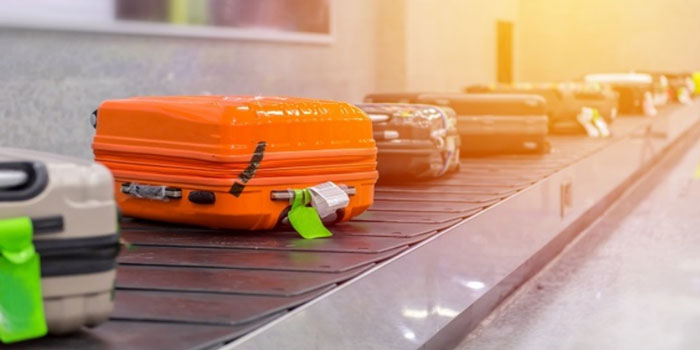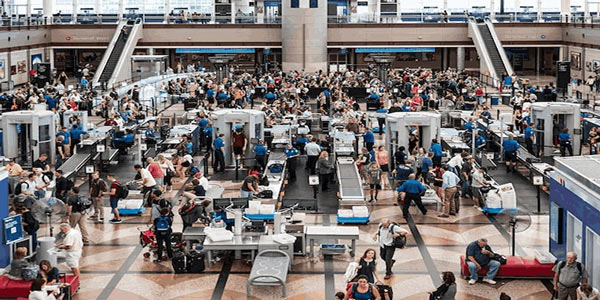Bankruptcies are not unusual in the aviation sector. The three major U.S. airlines—American (AAL), United (UAL), as well as Delta (DAL)—have all declared bankruptcy throughout the past but have since emerged stronger by combining with other companies. There is an equally large list of airlines that weren't as fortunate. Why Air Travel Is So Hard In The U.S? Why is the airline business associated with perceptual losses and bankruptcy, given the critical significance of its service and its significant contribution to making the globe a smaller place? Here are four of the main problems facing airlines today.
Here Are The Top Four Issues That Keep Airlines From Succeeding
Get Off The Plane
If you have ever flown overseas, you will be quite acquainted with the process of entering the country at the port of entry. As you enter the country, you must do so at a designated port of entry. After you get off the aircraft, you'll have to undergo an immigration screening in the United States. Be prepared to provide all necessary documentation to the CBP official at the airport. Bring any necessary paperwork for entering the United States with you on the plane. If you're worried about losing anything, bring the originals to the United States and leave copies behind. To avoid unnecessary holdups when you get off the aircraft, it's also a good idea to fill out whatever immigration cards or customs declaration paperwork the airline gives you ahead of time.
Pass Past The Immigration Control Point
For non-U.S. citizens to study abroad, the Department of Homeland Security mandates that they have a valid visa, passport, Form I-20, or Certificate for Eligibility with Nonimmigrant Student Status. The following items are highly recommended to be packed in your carry-on:
- Evidence that you have been accepted to attend college
- Fee Statement Receipt
- Payment confirmation for school expenses
- Receipt for the SEVIS I-901 Fee
- Officially Authenticated Transcripts of Grades
- Test results for English and other required exams
- Proof that you have enough money in the bank to support yourself in the United States.
- The G-28 and any accompanying letters of interpretation or other customs paperwork
There is a two-step procedure to clear immigration and customs (be careful to use the "Visa" line at immigration). In most cases, the initial stop will be at an administrative checkpoint, where you'll need to provide your passport, visa, as well as I-20. The next step is going through customs once you have picked up your checked bags from the baggage claim carousels.
Return Your Luggage

It may be difficult to locate the appropriate baggage claim area at a foreign airport. There should be signs directing you to where your checked bags will be stored, but if not, you may ask a member of airport staff or visit an information booth for assistance.
Most of us have our routine for picking up bags at the airport's baggage claim. These guidelines can help you stay safe and on the go, whether you want to be the first at the baggage claim or choose to utilize an airline's mobile baggage monitoring tool.
Make It Simple To Find Your Luggage:
Put something on your bag that stands out from the others, such as a sticker, a ribbon, or a bold color.
Examine Your Tags:
Once your bags have been found, double-check the information on the tag stickers to ensure accuracy. Find your name tag or other means of identification. (Remember to label the exterior and inside of each bag with your contact information.)
Plan Ahead:
Every day, bags go missing. Get in touch with the airline to schedule a delivery or register a claim if your baggage doesn't show up at your hotel. Make sure you have enough clothes and toiletries in your carry-on to last a few days and write down the airline's contact information just in case. Check your luggage for damage before leaving the baggage claim area.
Proceed To Customs
It's possible that clearing customs will take longer than going through immigration because of the required interview with a CBP agent. The interview shouldn't cause any anxiety, but you should study the items you can and can't bring into the United States, just in case. Be ready to discuss your plans for your time in the United States and answer questions regarding your intended course of study and funding strategy. Also, remember to bring any relevant paperwork to show to the official.
Arrange For A Ride To Campus
Transportation to and from campus is easily accessible by bus, taxi, or rideshare from most U.S. airports. However, before hailing a taxi, you should check through your university's advisers and connections to see whether a school shuttle is available or if a rideshare can be arranged to meet you. Remember that among Shorelight's student services is airport transportation for students studying abroad. To get about town, you should install a ride-sharing app on your phone if you haven't already. In the United States, Lyft and Uber dominate the market. Pickup and drop-off locations at airports are well-signposted. If you use an app or a cab, follow the signs.
Enter The Campus

We made it through the tough phase! You will be shown to your residence hall and led to orientation events after you arrive on campus. Several helpful and knowledgeable university staff will be there to answer your questions and point you in the proper route. There will most likely be a new student orientation for you to attend during your first few days on campus. To ensure you know what to anticipate upon your arrival on campus, your campus team will email you a comprehensive schedule and all pertinent data in advance (usually a week before your arrival on campus).
Conclusion
Although airlines provide a necessary function, their capacity to turn a profit is severely constrained by issues such as the persistence of loss-making carriers, excessive costs, susceptibility to exogenous occurrences, and a public perception that they offer subpar services. While certain budget airlines have found sustained success, profitable airlines remain an exception rather than the rule.



